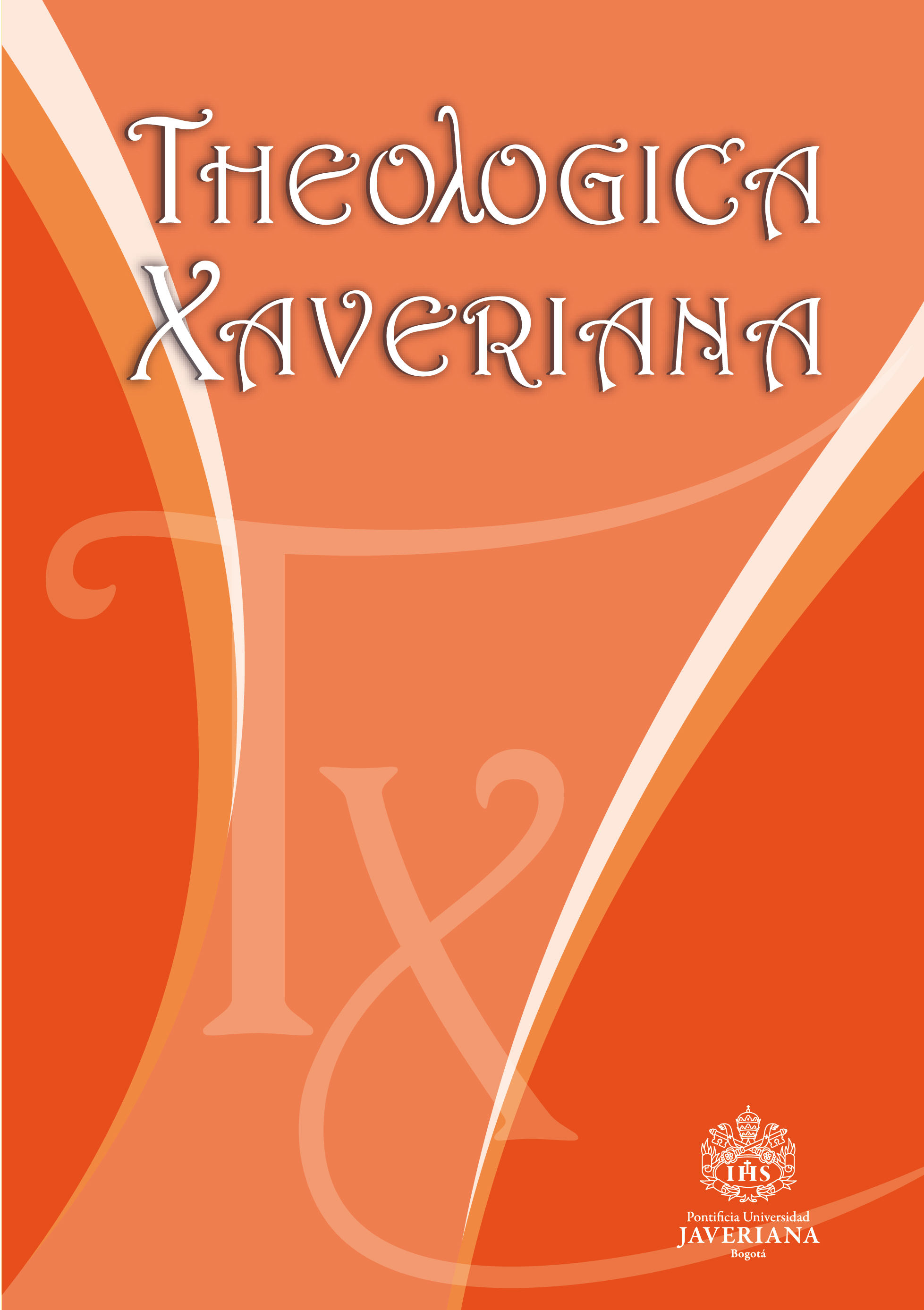Résumé
Lo studio percorre gli usi del termine oikonomia e dei suoi derivati nelle opere di Gregorio di Nissa dedicate alla discussione con Eunomio. La prospettiva analitica permette di ricostruire teologicamente la valenza ontologica della misericordia dalla prospettiva del rapporto tra essere e storia. L’attualità costante del pensiero cristiano può, infatti, essere rinvenuta nella dimensione trinitaria del Dio cristiano, che in quanto caratterizzato da una relazionalità immanente si rivela come relazione nel Filiazione del Verbo che si fa carne, in modo tale da riversare nella storia stessa la propria vita. L’uso di oikonomia è, dunque, legato all’ontologia trinitaria del Nisseno.
Brugarolas, Miguel. “La mediación de Cristo en Gregorio de Nisa.” Scripta theologica 49/2 (2017): 301-326.
Cavalcanti, Elena. Studi eunomiani. Roma: Pontificium Institutum Orientalium, 1976.
Daley Brian E. “Divine Transcendence and Human Transformation: Gregory of Nyssa’s Anti-Apollinarian Christology”. In Re-Thinking Gregory of Nyssa, a cura di Sarah Coakley, 67-76. Oxford: Blackwell Publishing, 2003.
_____. “Heavenly Man and Eternal Christ: Apollinarius and Gregory of Nyssa on the Personnal Identity of the Savior”. Journal of Early Christian Studies 10 (2002): 469-488.
Dams, Théodore. La controverse eunoméenne. Paris: Faculté de Théologie de l’Institut Catholique, 1951.
Di Nissa, Gregorio. Basilum fratem. GNO Vol. X. Tomo I. Leiden: Brill, 1990.
_____. Contra Eunomium. I-II. GNO Vol. I. Leiden: Brill, 1960.
_____. Refutatio Confessionis Eunomii. Contra Eunomium III. GNO Vol. II. Leiden: Brill, 1960.
Kopecek, Thomas. A History of Neo-arianism. Vol. I-II. Cambridge (MA): Philadelphia Patristic Foundation, 1979.
Maspero, Giulio. “Economy”. In The Brill Dictionary of Gregory of Nyssa, a cura di Giulio Maspero e Lucas Francisco Mateo-Seco, 541. Leiden-Boston: Brill, 2010.
_____. “El misterio de la Virgen toda limpia en Gregorio de Nisa”. Scripta de Maria II-1 (2004): 183-205.
_____. “La cristología de Gregorio de Nisa desde la perspectiva del II Concilio de Costantinopla”. Scripta theologica 36 (2004): 359-373.
_____. “Storia e salvezza: il concetto di oikonomia fino agli esordi del III secolo”. Studia Ephemeridis Augustinianum 96 (2006): 239-260.
Mateo-Seco, Lucas Francisco. “Notas sobre el lenguaje cristológico de Gregorio de Nisa”. Scripta theologica 35 (2003): 89-112.
Moreschini, Claudio. Gregorio di Nissa. Teologia trinitria. Milano: Rusconi, 1994.
Pottier, Bernard. Dieu et le Christ selon Grégoire de Nysse. Namur: Culture et Vérité, 1994.
Tixeront, Joseph. Histoire des dogmes dans l’antiquité chrétienne. II. Paris: J. Gabalda, 1909.
Vaggione, Richard Paul. Eunomius of Cyzicus and the Nicene Revolution. Oxford: Oxford University Press, 2000.
____. Eunomius. The Extant Works. Oxford: Clarendon Press, 1987.
Esta revista científica se encuentra registrada bajo la licencia Creative Commons Reconocimiento 4.0 Internacional. Por lo tanto, esta obra se puede reproducir, distribuir y comunicar públicamente en formato digital, siempre que se reconozca el nombre de los autores y a la Pontificia Universidad Javeriana. Se permite citar, adaptar, transformar, autoarchivar, republicar y crear a partir del material, para cualquier finalidad (incluso comercial), siempre que se reconozca adecuadamente la autoría, se proporcione un enlace a la obra original y se indique si se han realizado cambios. La Pontificia Universidad Javeriana no retiene los derechos sobre las obras publicadas y los contenidos son responsabilidad exclusiva de los autores, quienes conservan sus derechos morales, intelectuales, de privacidad y publicidad.
El aval sobre la intervención de la obra (revisión, corrección de estilo, traducción, diagramación) y su posterior divulgación se otorga mediante una licencia de uso y no a través de una cesión de derechos, lo que representa que la revista y la Pontificia Universidad Javeriana se eximen de cualquier responsabilidad que se pueda derivar de una mala práctica ética por parte de los autores. En consecuencia de la protección brindada por la licencia de uso, la revista no se encuentra en la obligación de publicar retractaciones o modificar la información ya publicada, a no ser que la errata surja del proceso de gestión editorial. La publicación de contenidos en esta revista no representa regalías para los contribuyentes.



